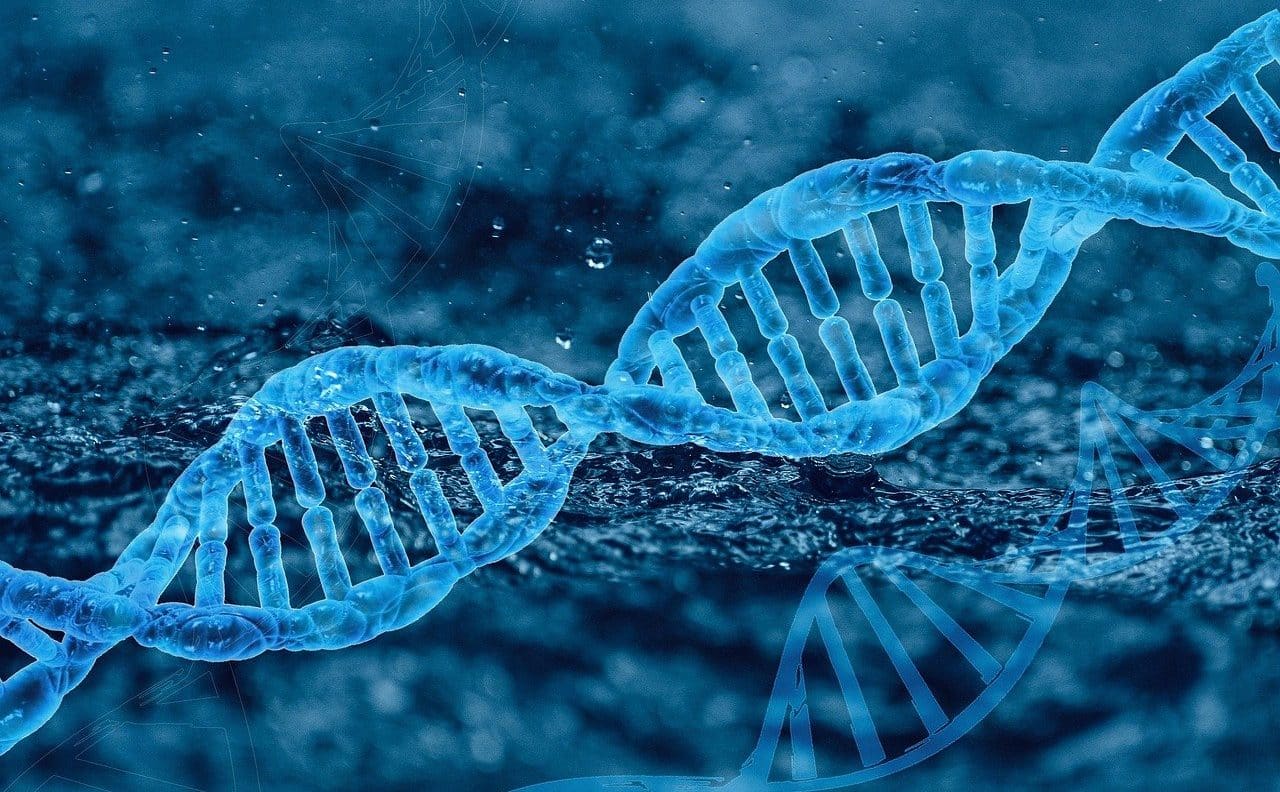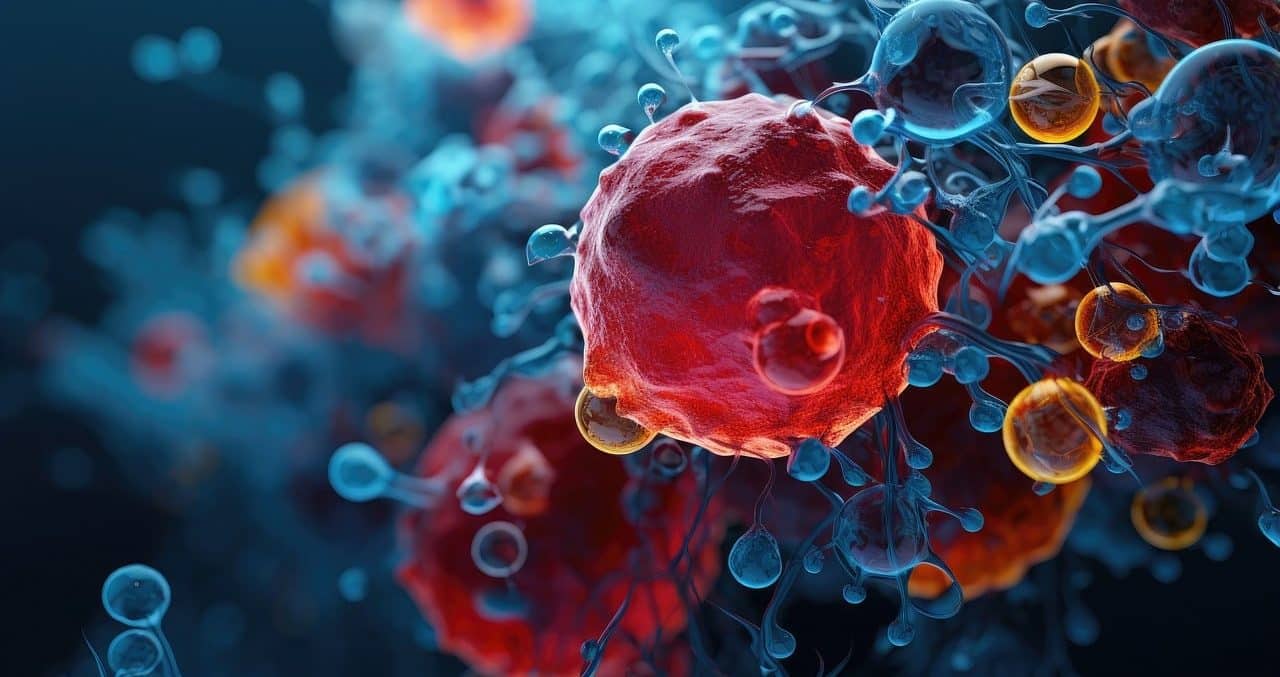
Chromatin is especially composed of DNA and proteins.
Chromatin is a complex structure composed mainly of DNA (deoxyribonucleic acid) , histone and non-histone proteins (the structural proteins of chromatin), which constitutes the genetic material within the cell nucleus. Its main function is to package DNA into a smaller volume to fit inside the cell nucleus and regulate access to genetic material during processes such as DNA replication, transcription, and DNA repair. Chromatin can be in different states of condensation, depending on needs, and can influence gene expression and cellular function.
Structure
Chromatin has a highly dynamic and complex structure that varies according to the needs and physiological states of the cell.
There are two main states of chromatin: euchromatin and heterochromatin . Euchromatin is a less compact and more accessible state of DNA. The latter is less densely packed around histones, facilitating access of regulatory proteins and transcription complexes to genes, and is associated with gene expression.
Heterochromatin is a more densely packed state of DNA , which is strongly associated with proteins and highly compacted, making it difficult for transcription factors to access genes. Heterochromatin is generally associated with repression of gene expression and can be divided into constitutive and facultative, depending on its persistence and specific function in the cell.
The chromatin domain comprises specific regions of the cell nucleus that display a particular three-dimensional organization and specific functional characteristics. It can be visualized using microscopy techniques and DNA localization studies. Chromatin domains may be associated with the regulation of gene expression, nuclear organization, chromosome segregation, and other cellular processes. They contribute to the spatial and functional organization of the genome in the nucleus, which is essential for proper cellular function and integrity.
Histones
Histones are highly basic proteins found in the nucleus of eukaryotic cells and are involved in packaging DNA into chromatin. There are five main types of histones: H1, H2A, H2B, H3 and H4 . These assemble together with DNA to form the basic structural units of chromatin, known as nucleosomes .
Each nucleosome consists of a histone octamer, composed of two copies each of H2A, H2B, H3, and H4, around which DNA is wound. H1 is associated with the DNA that leaves and enters the octamer, helping to stabilize the structure .
Histones play a crucial role in gene regulation . Posttranslational modifications, such as acetylation, methylation, phosphorylation, and ubiquitination, can alter chromatin structure and thus influence DNA accessibility and gene expression. For example, histone acetylation is generally associated with chromatin opening and activation of gene transcription, while methylation can have variable effects depending on its degree and the modified histone residue.
The histone code is the specific pattern of post-translational modifications that can influence gene activity. This is interpreted by histone reader proteins, which recognize specific modifications and recruit others to regulate gene expression.
Additionally, there is more than one histone isoform , which are histone variants generated by alternative processing of messenger RNA or by post-translational modifications. They may have specific functions in regulating chromatin structure and gene activity in different cellular contexts or physiological conditions.

Despite being opposite processes, DNA methylation and demethylation complement each other for various essential functions.
Methylation and demethylation
DNA methylation is an epigenetic process that involves the addition of methyl groups (-CH3) to the nitrogenous bases of DNA, mainly cytosines. This chemical modification is catalyzed by enzymes called DNA methyltransferases. DNA methylation plays a crucial role in the regulation of gene expression, cellular differentiation, embryonic development, genomic imprinting, and genome stability.
DNA methylation is generally associated with repression of gene expression when it occurs in gene promoter regions. The presence of methyl groups there can interfere with the binding of transcription factors and recruit repressor proteins that inhibit gene transcription. On the other hand, DNA methylation outside of promoters, such as gene bodies, can have an activating or repressive effect on gene regulation, depending on the cellular context and the specific location of the methylation sites.
DNA demethylation is the opposite process, in which methyl groups are removed from DNA. It can occur passively, during replication, or actively, through the action of demethylase enzymes. These can act directly on methylated bases or eliminate methyl groups through repair mechanisms.
The dynamics of DNA methylation and demethylation are crucial for the regulation of gene expression and for maintaining cellular plasticity in response to environmental and physiological signals . Changes in methylation patterns are implicated in a variety of human diseases, including cancer and neurodegenerative disorders, and represent an important area of research in biology and medicine.

Ribonucleic acid is a molecule similar to DNA.
RNA
In the context of chromatin, RNA (ribonucleic acid) plays a fundamental role in regulating gene expression and cellular function. It is a molecule similar to DNA, but with some important differences in its structure and function.
RNA polymerase is a key enzyme that transcribes DNA into RNA. It binds to DNA in a specific region called the promoter, and synthesizes a complementary RNA molecule, using one of the DNA strands as a template. This newly synthesized molecule is known as messenger RNA (mRNA).
mRNA carries genetic information from DNA in the nucleus to ribosomes in the cytoplasm , where it is translated into proteins during the translation process. It is key to protein synthesis and determines which ones will be produced in a particular cell at any given time.
In addition to mRNA, there are other types that play specific roles in the cell. For example, transfer RNA (tRNA) is responsible for delivering the correct amino acids to the ribosome while proteins are synthesized. Each tRNA binds to a specific amino acid at one end and has an anticodon complementary to the codon in the mRNA, allowing it to pair with the correct sequence during translation.
Ribosomal RNA (rRNA) is an essential component of ribosomes , which are the cellular complexes responsible for protein synthesis. It is part of the ribosome structure and helps facilitate the binding between mRNA and tRNA during translation.
Finally, RNA interference (RNAi) regulates gene expression by inhibiting the translation or degradation of specific mRNAs. It plays an important role in cellular defense against viruses during development and cellular homeostasis .
